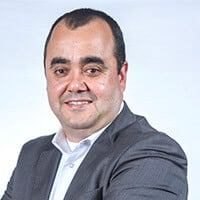Data centers are a main driver for the digital economy in Latin America, but also a sector consuming a large amount of energy. Power densities of server racks have remained steady between 3 and 5 kW worldwide, but data centers have recently seen a rapid growth in the power density of each rack, as organizations embrace digital transformation and implement new technologies such as Cloud Computing, IoT, AI or Edge. According to data from IDC, 50% of small and medium businesses in Latin America are already digital, while 40% of the 3,000 largest businesses in the region are increasing the revenue they generate from digital experiences, which will result in greater data consumption.
Older generations of hardware may lack the capacity and scalability needed to support the current rapid growth and future technical requirements. Organizations have to face the challenge of modernizing their data center infrastructure, in order to accomplish urgent goals related to their digital transformation.
This is why new data centers are being designed to support high-power density racks. Growing demands on IT infrastructure have increased the average power density of a rack in Latin American data centers from 4 to 6 kW, according to data from the Latin America Data Center Construction Market. This data also points to the growing need for solutions such as high-performance computing (HPC) and virtualization, which will likely continue to increase rack power density to between 8 and 10 kW by as early as 2025.
Greater power requires new cooling technologies
As higher power densities become commonplace in data centers, and as the need to save energy and adopt sustainable practices gains traction, data centers will require technological innovations in the design of their cooling systems to allow for an optimal use of space, deployment time, budget and energy. Despite the availability of mature technologies such as direct expansion (DX) systems, evaporation cooling and air refrigeration continue to dominate the industry and have seen a number of improvements that have made them more efficient and sustainable. However, both remain vulnerable to drawbacks such as the amount of space they occupy and high energy costs.
In recent years, liquid cooling technologies entered the spotlight, especially in high-performance computing (HPC) and high density data centers. These new developments have led data centers to begin experimenting with different methods such as liquid immersion cooling to resolve ongoing heat generation problems and achieve greater energy efficiency relative to air-cooled sites.
Liquid immersion cooling involves distributing the heat energy of large components by totally submerging server racks in a heat-conducting liquid. The liquid used must have sufficiently low electrical conductivity (dielectric refrigerant) to avoid interference with normal server operation.
According to data from the Data Center Thermal Management Report 2020, Omdia forecasts growth in liquid cooling techniques as data center operators look for methods to continue improvements to efficiency and handle computing operations that are evermore energy-intensive. The rapidly growing market for liquid immersion cooling and direct-to-chip liquid cooling is set to double between in 2020 and 2024.
In addition to reducing data center energy consumption and improving PUE, key benefits of liquid cooling also include its flexibility and scalability, allowing faster deployment with standardized modules. In raised floor environments, it allows for cooling without requiring a total replacement of the infrastructure, while also offering a lower total cost of ownership (TCO).
We know that technological innovations are constantly changing, and that the IoT, artificial intelligence, virtual reality, cloud computing, big data and mobility will continue to guide data centers towards high density in the future. As the demand for energy consumption continues to grow, new cooling solutions will be required to keep critical facilities and infrastructure working at their maximum capacity. Liquid immersion cooling is a key innovation option that will enable greater efficiency, sustainability and functionality over traditional cooling solutions.



